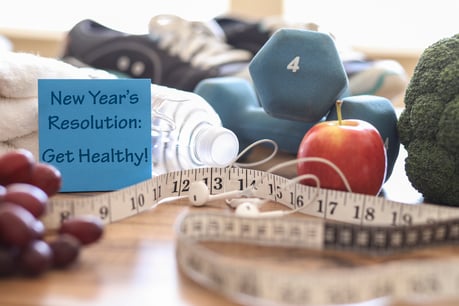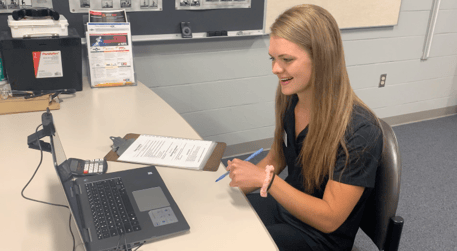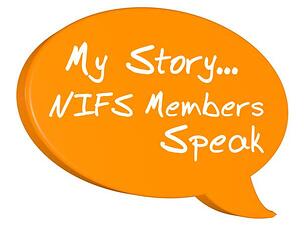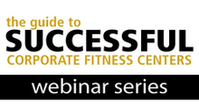 With the warmer summer months, it's the most prominent time when dehydration can become a big health issue and roadblock, especially if you are exercising outdoors. The heat and humidity can make it difficult to maintain a healthy balance of fluids in the body. That's why staying hydrated is not only important for your health but also for your fitness goals.
With the warmer summer months, it's the most prominent time when dehydration can become a big health issue and roadblock, especially if you are exercising outdoors. The heat and humidity can make it difficult to maintain a healthy balance of fluids in the body. That's why staying hydrated is not only important for your health but also for your fitness goals.
The Importance of Staying Hydrated
Water is essential for the proper functioning of our bodies. It regulates body temperature, helps transport nutrients, and removes waste. When we don't drink enough water, our bodies can become dehydrated, which can lead to serious health problems. Mild dehydration can cause headaches, fatigue, and dry skin, while severe dehydration can lead to heatstroke, seizures, and even death.
During the summer months, we are more likely to become dehydrated because we lose more water through sweating, and we may not be aware of how much water we are losing. Additionally, the heat can cause us to lose our appetite, which can make it harder to stay hydrated.
Exercising in the Heat and Hydration
Exercising in the heat can also have a significant impact on hydration levels. When we exercise, our bodies generate heat, and we sweat to cool down. This process can cause us to lose a lot of water, which can lead to dehydration if we don't replenish the lost fluids.
When we exercise in the heat, the risk of dehydration is even greater. This is because we lose more water through sweating, and the hot air can make it harder for our bodies to cool down. Additionally, if we are not used to exercising in the heat, our bodies may not be able to adjust to the higher temperatures, which can make us more susceptible to dehydration.
Staying Hydrated Through Water and Electrolytes
Drinking enough water is the most important thing you can do to stay hydrated. It's important to drink water before, during, and after exercise, especially if you're exercising in the heat. Aim to drink at least eight cups of water a day, and more if you're exercising or spending time outside.
Electrolyte replacement drinks like Gatorade, Powerade, Body Armor, or PRIME can also help you stay hydrated. When we sweat, we not only lose water, but also lose electrolytes like sodium, potassium, and magnesium. These electrolytes are essential for proper muscle and nerve function, and if we don't replace them, we can become dehydrated. You can use electrolyte replacement drinks to replenish these electrolytes.
5 Strategies to Stay Hydrated
Here are five strategies to stay hydrated during the summer months:
- Drink water before, during, and after exercise. You should aim to drink at least eight cups of water a day, and more if you're exercising or spending time outside.
- Use electrolyte replacement drinks. These drinks can help replenish electrolytes lost through sweating.
- Plan your exercise routine. Try to exercise early in the morning or later in the evening when temperatures are cooler. If you must exercise during the hottest part of the day, take frequent breaks and drink plenty of water.
- Wear appropriate clothing. Choose lightweight, breathable fabrics that allow sweat to evaporate, which can help you cool down more. Additionally, wearing a hat or visor can help protect your head from the sun, which can also help regulate your body temperature.
- Eat hydrating foods. Besides drinking water, you can also eat foods that are high in water content, such as watermelon, and cucumbers.
Staying hydrated is essential for maintaining good health and achieving your fitness goals, especially during the summer months. Drinking enough water, replenishing electrolytes, and planning your exercise routine can help you stay hydrated. And don't forget to wear appropriate clothing and eat hydrating foods! Remember, staying hydrated doesn't have to be a chore. It can be fun and easy to do. So, drink up, and enjoy the summer sun!

 Are you striving to accomplish a new health goal this new year? Whether it is eating healthier, exercising more, or beginning a new health routine, you will need to create habits to help you achieve your goal. When deciding on which habits you want to form heading into the new year, you may want to first consider WHAT a habit is. A habit is a behavior that is repeated on a regular basis whether it is an action, routine, or lifestyle and often we don’t even think about it.
Are you striving to accomplish a new health goal this new year? Whether it is eating healthier, exercising more, or beginning a new health routine, you will need to create habits to help you achieve your goal. When deciding on which habits you want to form heading into the new year, you may want to first consider WHAT a habit is. A habit is a behavior that is repeated on a regular basis whether it is an action, routine, or lifestyle and often we don’t even think about it.
 We are on the brink of a New Year and those looming resolutions start filling our head with what we should do or consider changing. Keep a positive mindset to not allow resolutions to fall to the wayside in the New Year, allow them to become lifestyle changes. Know that when you fall short, it's ok to give your self a restart. Check out these nine nutrition-related New Year's resolutions to not only set, but stick to.
We are on the brink of a New Year and those looming resolutions start filling our head with what we should do or consider changing. Keep a positive mindset to not allow resolutions to fall to the wayside in the New Year, allow them to become lifestyle changes. Know that when you fall short, it's ok to give your self a restart. Check out these nine nutrition-related New Year's resolutions to not only set, but stick to. 

 I recently shared
I recently shared 


 Sherri Pryor came to me in our corporate fitness center after starting this journey on her own. She was determined to continue to make positive changes in her life. She was definitely apprehensive about talking to me at first. However, she has overcome her own insecurities to become a stronger and more confident version of herself than the woman that first came to me three years ago. There have been goals set, goals achieved, and goals missed, but through it all she has always kept a positive attitude. This attitude has helped her become the best version of herself she can be. Here is her story!
Sherri Pryor came to me in our corporate fitness center after starting this journey on her own. She was determined to continue to make positive changes in her life. She was definitely apprehensive about talking to me at first. However, she has overcome her own insecurities to become a stronger and more confident version of herself than the woman that first came to me three years ago. There have been goals set, goals achieved, and goals missed, but through it all she has always kept a positive attitude. This attitude has helped her become the best version of herself she can be. Here is her story! I started this process in early 2012; I was committed more than I had ever been in my life to making changes, exercising more and improving my personal wellness. I was tired of feeling like I had no control over how I felt and looked. There are so many things in life that we truly can’t control. Making time for exercise and doing things to improve your overall health are not on that list. It was hard at first; but it got easier with time.
I started this process in early 2012; I was committed more than I had ever been in my life to making changes, exercising more and improving my personal wellness. I was tired of feeling like I had no control over how I felt and looked. There are so many things in life that we truly can’t control. Making time for exercise and doing things to improve your overall health are not on that list. It was hard at first; but it got easier with time.
 Are you new to running or have you been a runner for some time now? Either way you may be experiencing the typical aches and pains, such as muscle soreness or blisters, but have you experienced the numbness and tingling in your feet while running? It feels as though you have pins and needles in your feet or like they seem to have ‘fallen asleep’ from this weight-bearing activity. If so, don’t get your shorts in a bunch. You may reconsider a trip to the doctor, but it will be okay. Promise!
Are you new to running or have you been a runner for some time now? Either way you may be experiencing the typical aches and pains, such as muscle soreness or blisters, but have you experienced the numbness and tingling in your feet while running? It feels as though you have pins and needles in your feet or like they seem to have ‘fallen asleep’ from this weight-bearing activity. If so, don’t get your shorts in a bunch. You may reconsider a trip to the doctor, but it will be okay. Promise!
 With parties in full swing and family gatherings next week, the last thing you want to be is SICK! Tis’ the season for sneezing and wheezing. When you aren’t feeling 100% and you cough or sneeze, those germs float into the air and spread to the next person. Take these steps to help prevent the sharing of germs so you can share gifts instead!
With parties in full swing and family gatherings next week, the last thing you want to be is SICK! Tis’ the season for sneezing and wheezing. When you aren’t feeling 100% and you cough or sneeze, those germs float into the air and spread to the next person. Take these steps to help prevent the sharing of germs so you can share gifts instead!

 Happy Thanksgiving!! Some of you have already been active by participating in a Turkey Trot or Drumstick Dash, others may be enjoying some morning coffee while watching the Macy’s Thanksgiving Day Parade, or on the road traveling to see family, and those extra special individuals are busy cooking today’s feast. We all celebrate differently and have family traditions and things are thankful for. We are thankful for our amazing staff and the hard work they put in year round. We asked them to share what they are thankful for, what their favorite Thanksgiving dishes are, and about their family traditions.
Happy Thanksgiving!! Some of you have already been active by participating in a Turkey Trot or Drumstick Dash, others may be enjoying some morning coffee while watching the Macy’s Thanksgiving Day Parade, or on the road traveling to see family, and those extra special individuals are busy cooking today’s feast. We all celebrate differently and have family traditions and things are thankful for. We are thankful for our amazing staff and the hard work they put in year round. We asked them to share what they are thankful for, what their favorite Thanksgiving dishes are, and about their family traditions.